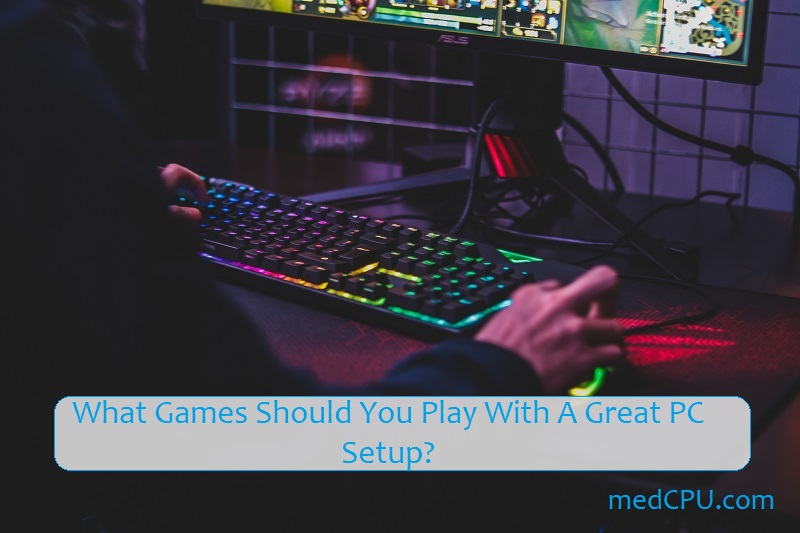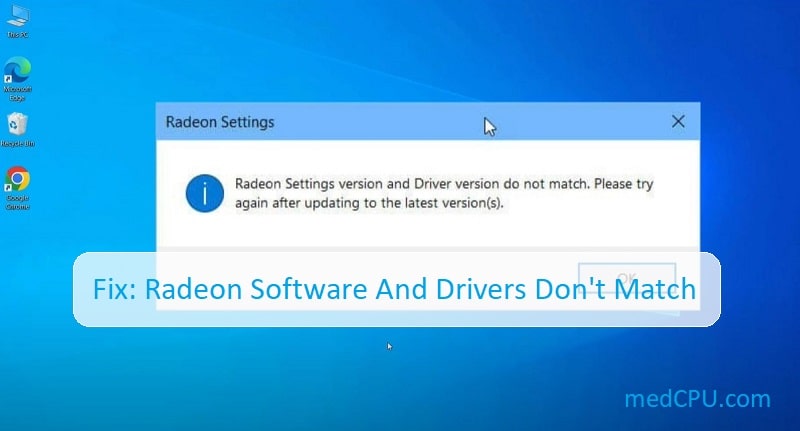Have you been wondering about the differences between Memory Vs Storage? Understanding the difference between RAM and storage is critical in understanding how any computer operates.
RAM, also known as random access memory, stores data only when the computer is powered on. Storage, on the other hand, is a term for non-volatile storage and includes hard drives and solid-state drives.
In this article, MedCPU will provide a helpful breakdown of what’s the difference between memory and storage in order to make an informed decision. Read on to find out more!
What is Memory?

Memory refers to the part of your computer that allows you to access short-term data. This component is also known as DRAM (or dynamic random-access memory).
Many operations are performed by your computer using data stored in its short-term memory. Editing a document, loading applications, and surfing the internet are just a few examples. Your computer’s memory will determine the speed and performance of its system.
A desk is the computer memory. Your desk is where you can find the items that you need immediately. Due to its limited size, a desk cannot hold much.
Main types of memory:
Let’s look closer at the three main types of computer system memory: cache, primary, and secondary. Secondary memory can also be called storage, which is perhaps confusing.
Primary Memory
Ram is primary memory. They process the instructions sent to memory chips by the CPU(Central Processing Unit). Each processor register holds small amounts of data and communicates with the CPU to perform mathematical calculations or issue instructions for data operations. The BIOS chip contains read-only memory (ROM).
The CPU can access primary memory directly. Although cache memory can be included in this definition, primary memory is most commonly referred to as DRAM memory modules connected to the CPU via a fast bus. DRAM chips store data that is used for CPU calculations. RAM transmits the calculations to attached/networked storage media as a set of instructions.

This volatile storage is dependent on continuous power. If the CPU is powered down, the memory is also affected, and all data in RAM is lost. The system starts by accessing the OS and the starting applications from storage.
After that, it repopulates primary RAM. DRAM transfers data much faster than storage or cache memory’s SRAM. However, its architecture and direct connection with the CPU allow it to transfer data significantly faster than storage.
Read also our guide about Cpu Vs Memory Vs Disk comparison, click here.
Cache Memory
Cache memory is a high-speed memory cache that allows for fast data processing. Cache memory identifies repeated instructions and data in primary memory and creates duplicates of those instructions. Instead of repeatedly accessing slower primary memories for the exact instructions or data, the CPU accesses a faster cache.
The cache is sometimes called CPU memory. It runs on high-performance SRAM modules. To perform performance-sensitive operations, the CPU can access faster cache memory. Cache memory can be found on the motherboard or on another chip that has a bus interconnect with the CPU.
Cache memory stores instructions, data, and other information that the CPU uses during computer operations. This information is not stored in primary memory and can be retrieved faster from high-performance cache memory by the CPU.
This level of performance is possible by the CPU looking in cache memory first before it looks in primary memory when processing data and instructions. Multilevel cache memory is more efficient than monolithic cache memory. The CPU can prioritize repeated data or instructions in lower or higher cache performance tiers.
How much memory do you need?
Once people have a basic understanding of RAM (or memory), this is a common question. There is no single answer. Because every user has different needs, it doesn’t have one answer.
A game hosting company might need 256GB of server memory in order to host hundreds of game servers on one node. For small business hosting, 32GB RAM may be sufficient.
To determine how much memory to allocate, we recommend that you research the system requirements for the applications you want to run.
What is Storage?

A component of a computer system that allows data to be stored on a long-term is called storage. It is also known as an SSD (Solid State Drive) or a hard drive.
The storage stores data and information that is permanently stored. It stores high-capacity data that is not stored in the computer’s memory.
If the power is cut, the data will still be available in the storage device. It is also known as non-volatile storage.
It does not access the data directly, but the CPU transfers it from storage to memory whenever the application requires the data. It allows computer users to store and access their files and operating system for an indefinite time.
Main Types Of Storage:
Hard Drive Mechanical
A mechanical hard drive uses moving parts, such as a magnetic disk or optical disk. This is the most common storage method and is widely used. However, every year more devices abandon mechanical drives and opt for Solid State Drives.
Although hard disks were initially large, they took up considerable space. However, they have become smaller over time.
The main problem with mechanical drives is their inability to transfer data at high speeds. These drives are more affordable and can still be used to store large amounts of data.
Solid State Drive (SSD).
SSD, or Solid State Drive, is an electronic storage device that is non-volatile and non-volatile. This storage device was created to replace the traditional mechanical hard drive and is rapidly gaining popularity. It is found in many devices, including computers, servers, and phones.
SSDs are quicker than hard drives because they have less latency, are more reliable, and offer better protection in harsh environments. They use less power than hard drives.
While most SSDs come with flash memory chips, volatile memory chips are available for faster storage speeds. These chips are backed up with non-volatile storage. You can combine them with hard drives to create a hybrid. The Fusion Drive in MacBook is an example of such a combination.
NVMe
NVMe hard drives represent the latest advancement in drive technology. Non-Volatile Memory Express is an acronym that stands for Non-Volatile Memory Express. It was designed to speed up data transfer from enterprise to SDDs, client systems, or vice versa. It is both a storage protocol and a host controller interface.
It maps I/O commands and responses to shared memory on the host. A PCIe Interface is also available to the host.
How much storage space do you need?
The operating system and the purpose of the server will affect how much storage space you have. There are many storage options for cloud and dedicated servers.
Cloud servers allow you to scale up your plan without worrying about finding the right drive storage. You will need to consider long-term storage requirements when using a dedicated server. It’s challenging to add drives.
Consider the role your server will play. Large game files and data processing will require a lot of storage. A smaller amount of storage might be appropriate for personal users.
The Difference Between Memory and Storage
One person claims that he has 500 GB of memory on his computer, but the storage is only 500 GB in reality. There are many differences between memory and storage.
Data retention
The data stored in memory (here RAM) is temporary and will be lost when your computer is turned off. But storage devices can store data for long periods, even without power.
Capacity
Memory’s capacity is smaller than storage. It’s not uncommon to see 4GB of memory, while there are 6GB, 8GB, and 2GB respectively in a computer. Computers currently support 512 GB of operating memory. However, hard drives that are larger than 2 TB can be used.
The price
Memory is more expensive than storage. A GB RAM is about $8, and a GB hard drive storage space costs around 10 cents. This is the main reason memory takes up less space than storage.
Speed RAM is faster than storage devices. A computer needs both memory and storage devices to function correctly.
Purpose
The storage device stores data, including programs. The memory (RAM), on the other hand, temporarily stores the CPU’s operational data and data exchanged with it.
To update your resume, double-click the icon. During this step, your resume is copied to RAM. Then you can edit it.
You will lose any changes made to your resume if the computer goes down. However, if your resume has been saved to the hard drive before the computer is turned off, these changes will remain for a long period.
FAQs

How to Add Storage?
Storage is an important factor in determining the computer’s performance.
Capacity: More hard drive storage can store more items on your computer.
Speed: SSDs are faster than HDDs, allowing you to access data and run programs more quickly, as well as boot your computer quicker. SSDs generally perform better than HDDs.
You can either replace your hard drive or add another one with Migrate OS/SD/HD feature from MiniTool Partition Wizard if you are unhappy with your computer’s storage or performance.
Is it better to have more storage or memory?
If you were trying to figure out whether to buy more storage or more memory, it would be most economical to do a price comparison between the two. With a higher amount of computer storage, you can store a lot more data for a long period of time. You will be able to save a lot more video, music, and photos.
With a higher amount of memory, you will have a faster computer. You will have more processing power to play games or do other tasks. You can also run apps at the same time with higher amounts of memory. If you like multitasking, then choose a higher amount of memory.
What is the difference between ROM and RAM?
RAM stands for random access memory and is a type of volatile memory. It is a temporary storage space in a computer system that can be accessed in any order. This means that the data stored in the RAM could be lost if there is a power failure.
ROM stands for read-only memory and is a type of non-volatile memory. It has stored data that cannot be erased. ROM is known as the permanent storage space in a computer system.
Is SSD memory or storage?
SSD (solid-state drive) is used as both memory and storage, but it functions much like a disk drive. It’s best to think of SSD as a way to increase the speed of your computer rather than thinking of it as an additional memory space.
Should I upgrade SSD or RAM?
Some experts argue that upgrading RAM is the better choice, as more RAM means less work for the computer’s processor and helps your PC run more smoothly. But upgrading your SSD is also a good idea if you want to speed up your PC.
How do I know which type of storage to use for my computer?
It can be hard to know which type of storage to use for your computer and what the differences are. It is important to remember that the more space on your device, the longer it will take to load or save data.
The size of the storage devices you purchase will depend on how many programs you need to be installed on your device and if you like to store a lot of media such as music, videos, and photos.
Which is more important: storage or memory?
Memory is more important than storage. A computer has a lot of memory, but it has very little storage. You can’t download something if you don’t have any storage.
Memory is where data is stored for processing. It might have a cache, but the cache isn’t permanent. Data is stored in temporary RAM before being written to long-term storage. A computer has both memory and storage.
Conclusion
That’s our guide about the difference between Memory Vs Storage. Now you know what each one is and which one is more important to the device you are using. This is something you will have to decide for yourself. Take the information in the guide to heart, but don’t forget to test each one out on your computer before buying them.
Thanks for reading and we hope that you find the information helpful.

Eyal Ephrat serves as the co-founder and CEO of medCPU.com, where technology is making significant strides in the field of medicine. Through his experience in purchasing PC and laptop equipment and various other tech products, Eyal Ephrat contributes valuable insights to medCPU’s mission.





